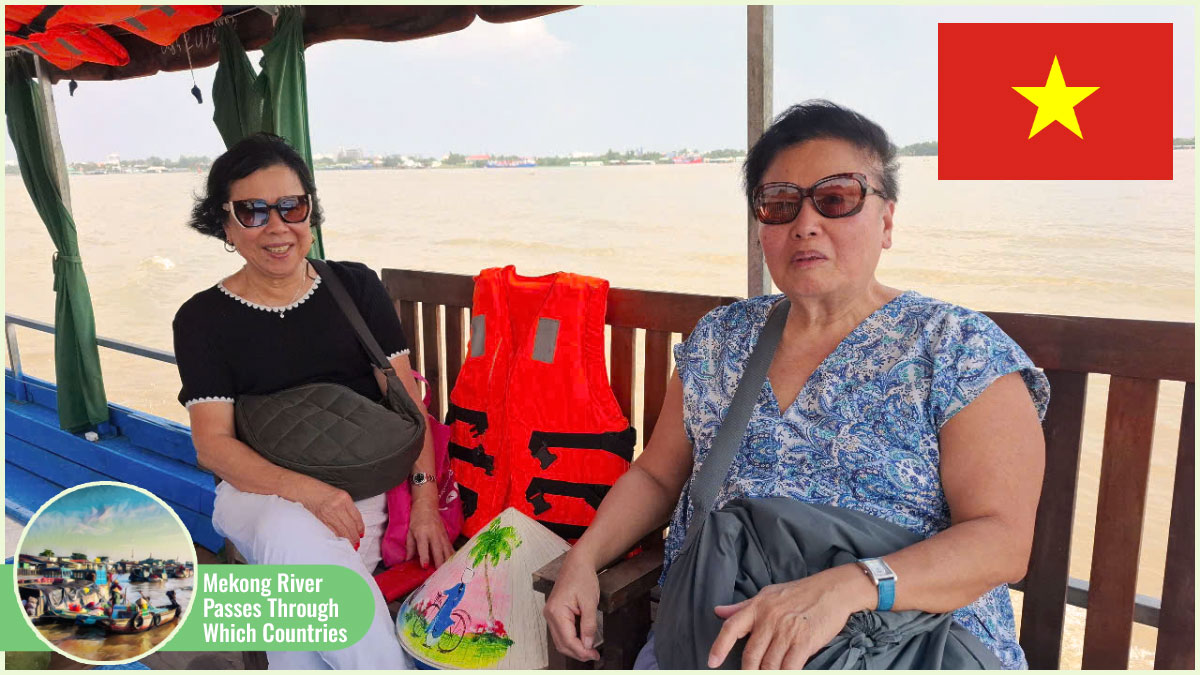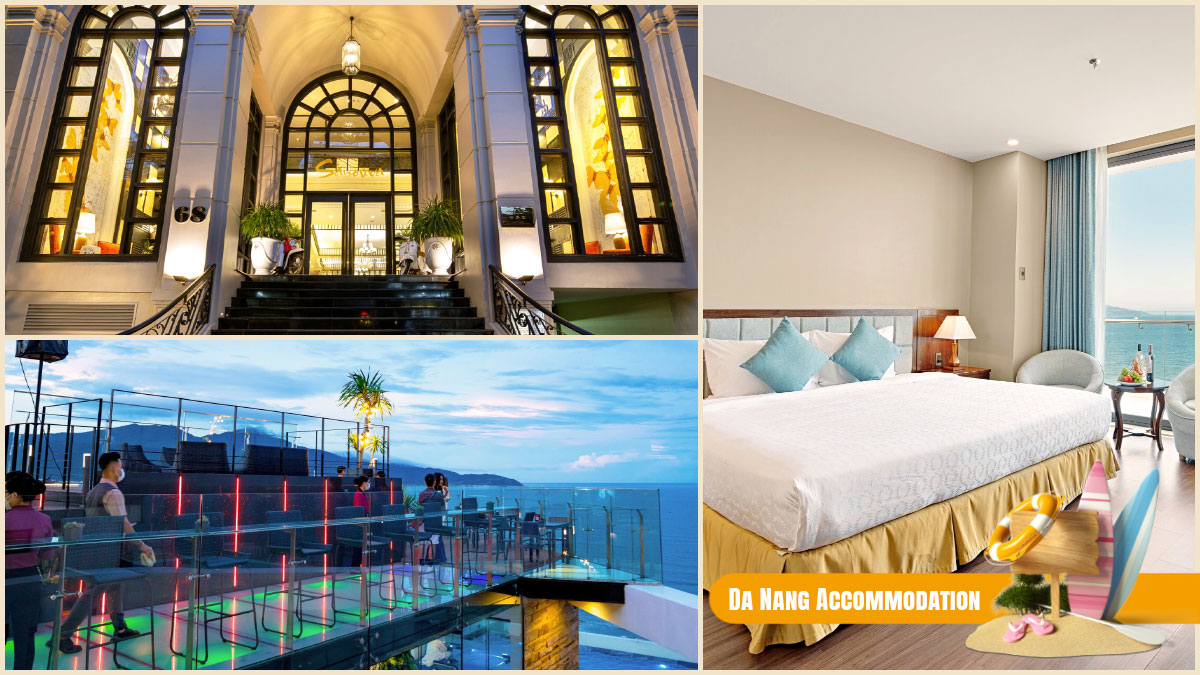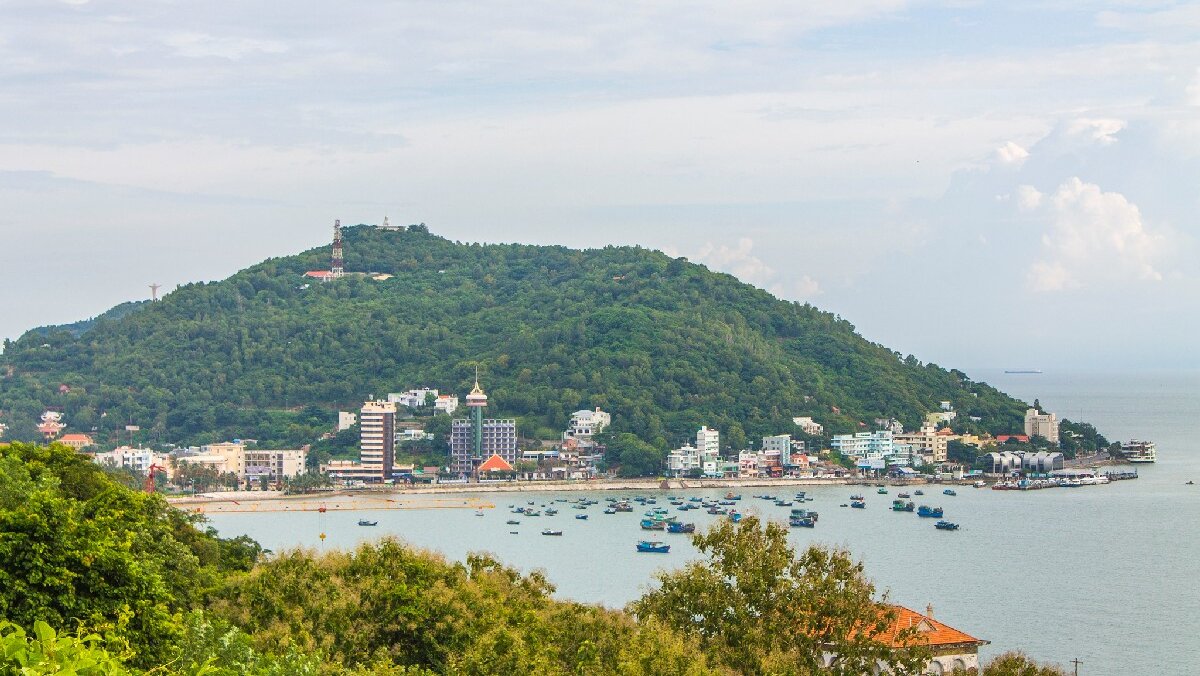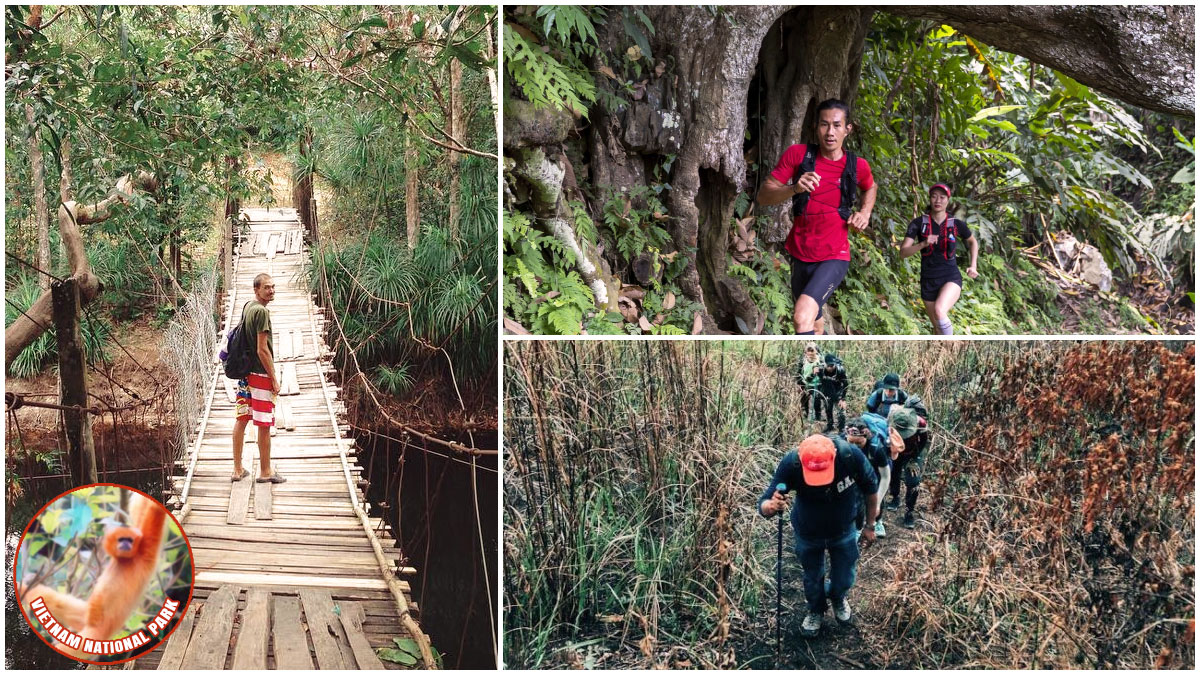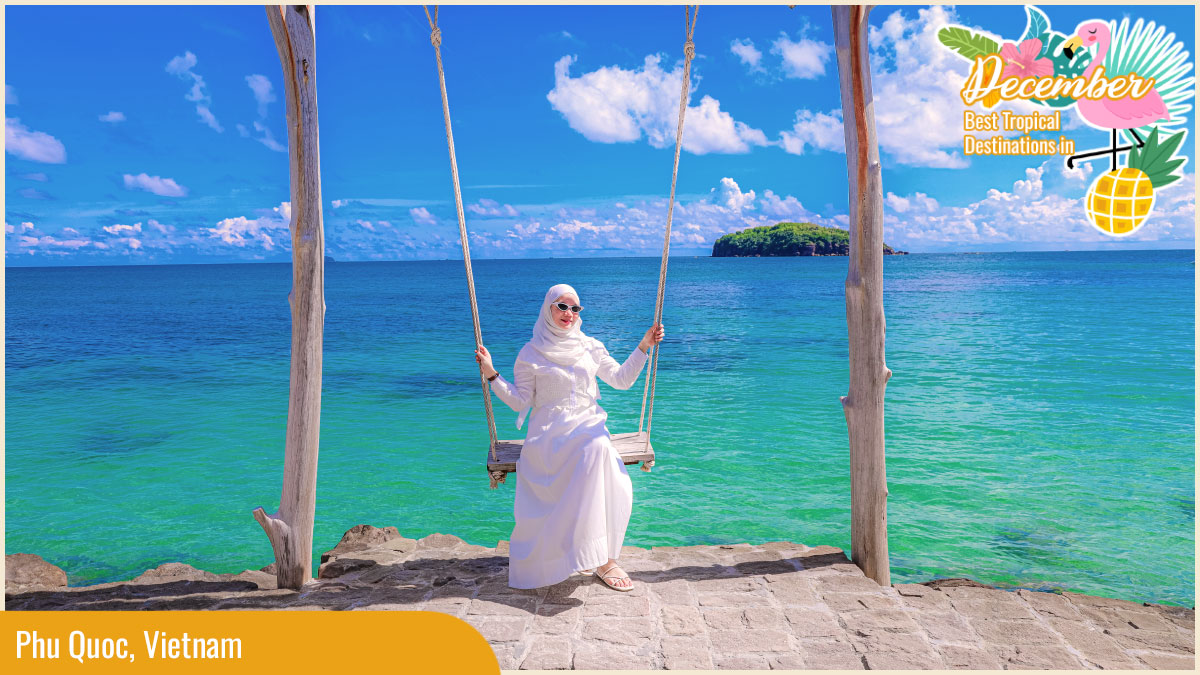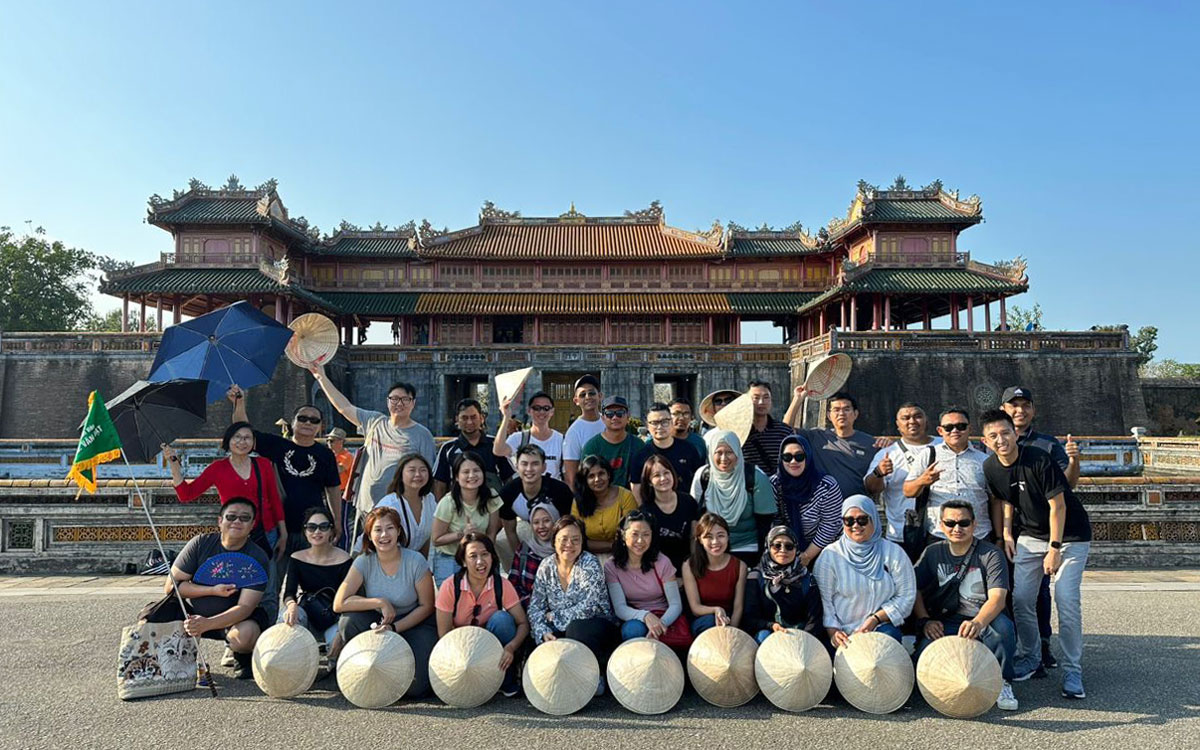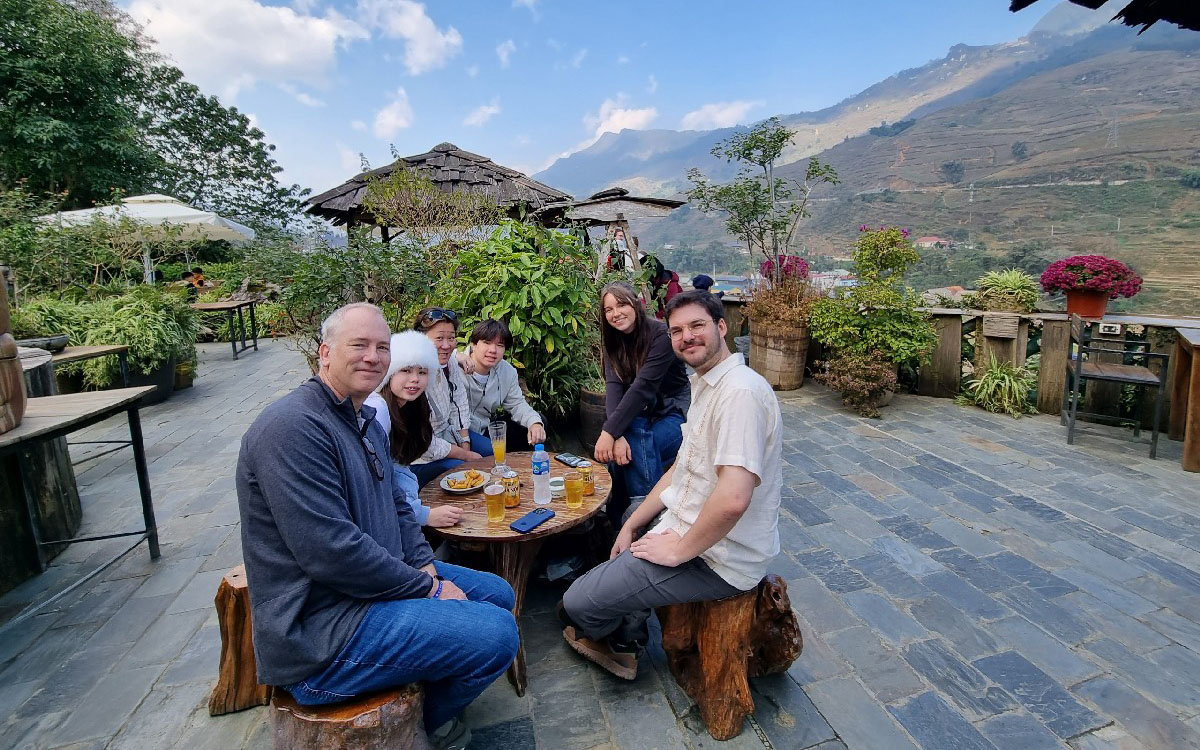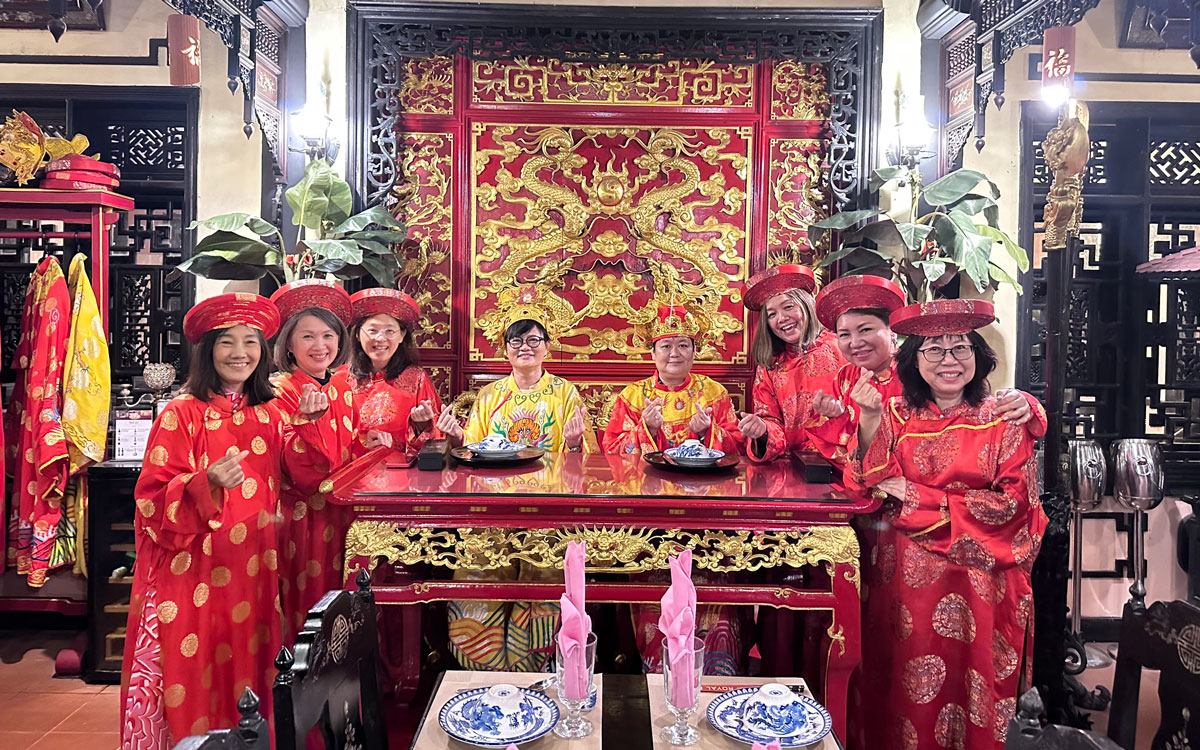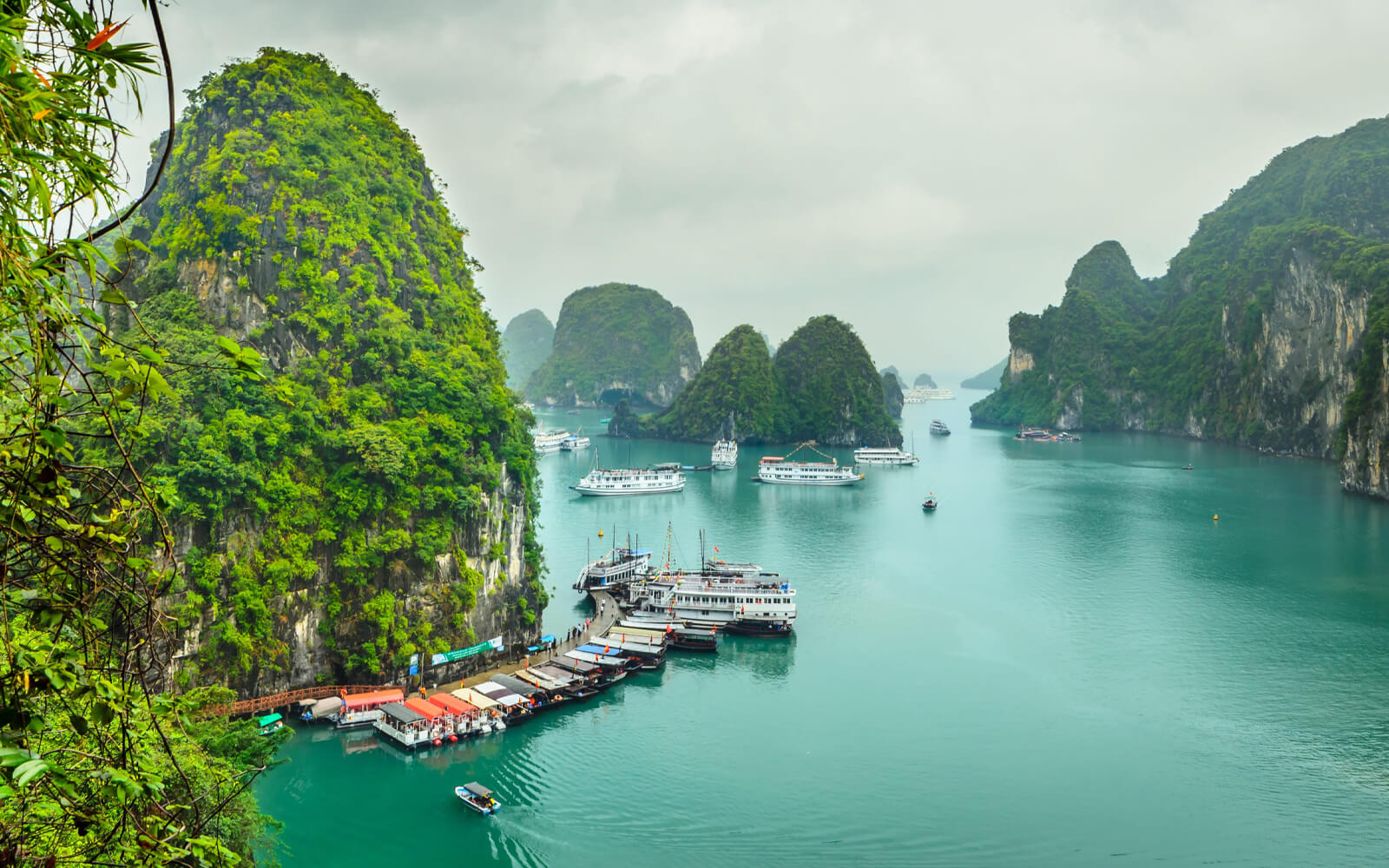Vietnam Physical Features: From Majestic Mountains to Stunning Coastlines
Explore the diverse Vietnam physical features from mountains to coastlines. Discover its geography, climate, and travel tips to experience Vietnam's natural beauty and unique landscapes.
Vietnam, with its captivating landscapes and diverse physical features, is a traveler's dream. Stretching from the towering mountains in the north to the expansive Mekong Delta in the south, the country offers a rich tapestry of natural wonders. The Vietnam physical features are as varied as they are beautiful, showcasing everything from rugged limestone karsts to sandy dunes and vibrant coastlines. Asia Legend Travel takes you on a journey through the country’s most iconic natural features, helping you explore what makes Vietnam’s landscape so unique and how it shapes the culture, climate, and travel experiences for visitors.
Vietnam Physical Features: A Diverse Landscape Overview
Vietnam’s landscape is often described as a geographical puzzle of mountainous highlands, coastal plains, and expansive river deltas. These distinct regions create diverse ecosystems and microclimates, offering travelers a wide range of outdoor adventures. Let's dive deeper into the different Vietnam physical features that define this stunning Southeast Asian country.
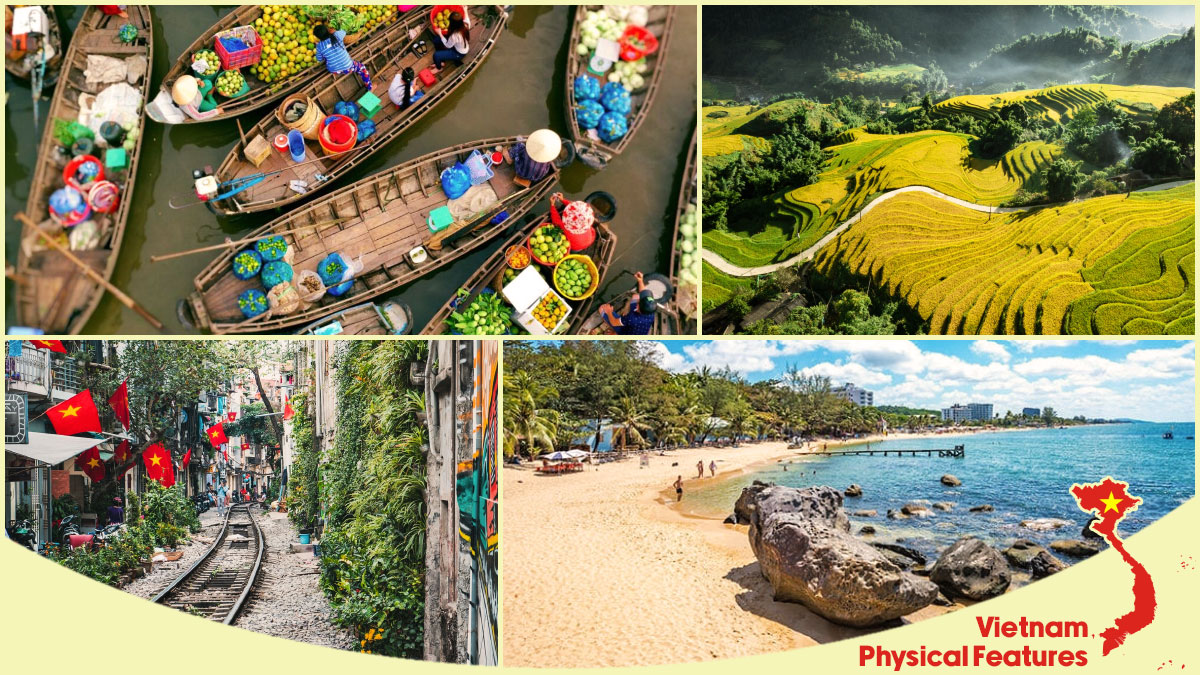
The diverse landscapes of Vietnam Physical Features
The Towering Mountains of Northern Vietnam
One of a well-known Vietnam physical features facts is that the northern region of Vietnam is dominated by impressive mountain ranges that are home to many of the country’s ethnic minorities. The Hoang Lien Son range, which includes the country’s highest peak, Fansipan (also known as "the Roof of Indochina"), is a must-visit for adventure seekers. Towering at 3,143 meters, Fansipan attracts trekkers and nature lovers from all over the world.
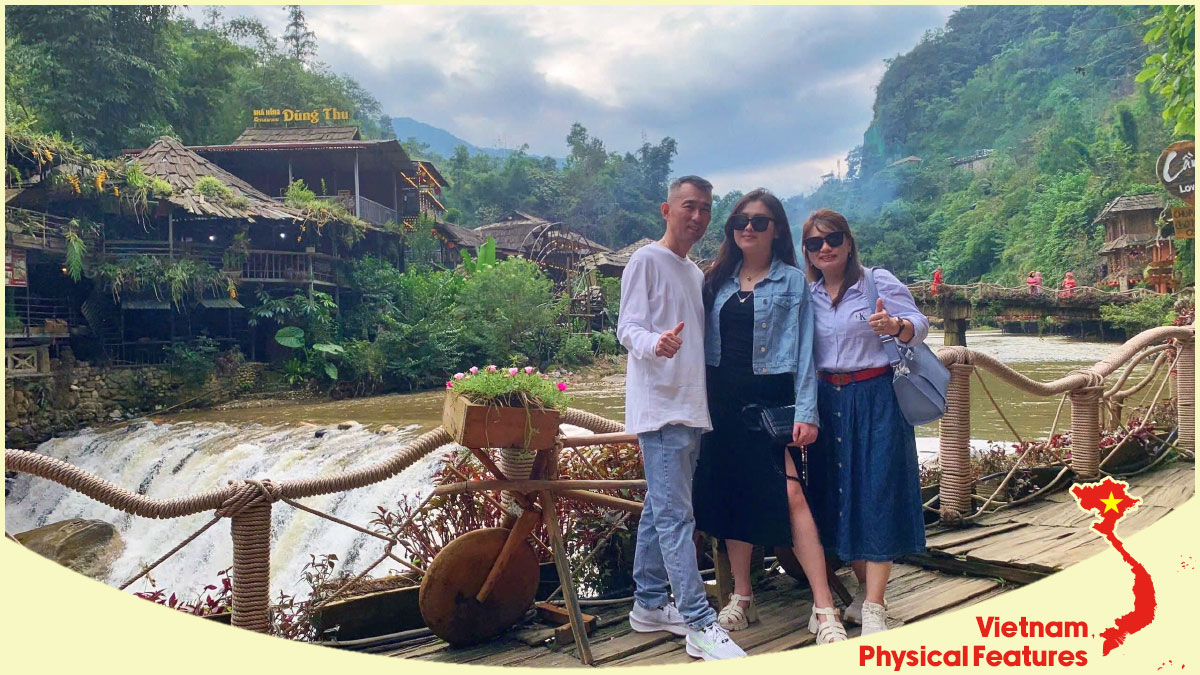
Vietnam Physical Features The Towering Mountains of Northern Vietnam
In addition to Fansipan, travelers can explore the mist-covered peaks and verdant terraced rice fields in Sapa, one of Vietnam's most picturesque destinations. The region’s cool climate and stunning scenery make it perfect for hiking, photography, and cultural immersion with local hill tribes of Vietnam population like the Hmong and Dao.
The Mekong Delta: A Water World in Southern Vietnam
Let's take a look at Vietnam physical features in the south. In the far south, the Mekong Delta presents a stark contrast to Vietnam’s mountainous north. This vast network of rivers, swamps, and islands is often referred to as Vietnam’s "rice bowl" due to its fertile soil and agricultural output. The delta is a place where life revolves around water—floating markets, houseboats, and sprawling rice paddies dominate the landscape.
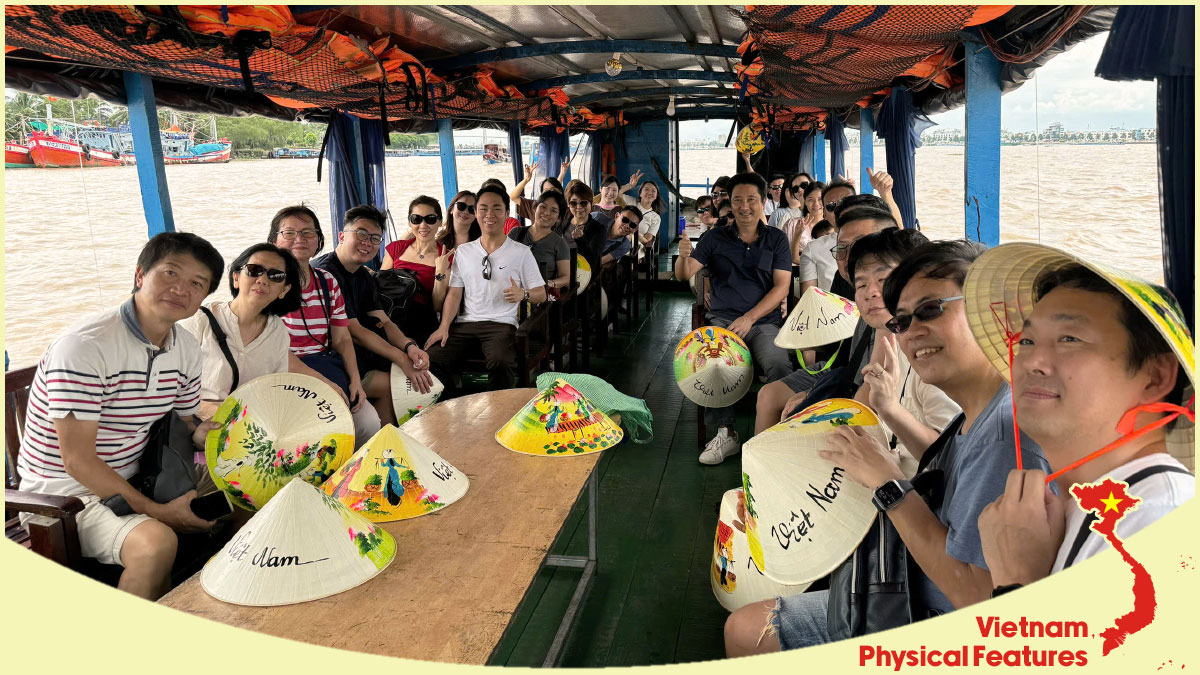
Vietnam Physical Features Water World in Southern Vietnam
Visitors can explore this watery world by boat, drifting through the floating markets of Can Tho, where local traders sell fresh produce and handmade goods. The Mekong Delta is not only a feast for the eyes but also offers rich cultural experiences, providing a glimpse into rural life in southern Vietnam.
The Spectacular Coastline of Central Vietnam
Vietnam physical features boasts over 3,000 kilometers of coastline, and nowhere is this more evident than in its central region. Known for its pristine beaches and historical cities, Central Vietnam is where the mountains meet the sea. One of the most stunning areas along the coast is Da Nang, with its golden sands and clear blue waters. Nearby, My Khe Beach and Lang Co Beach are perfect spots for swimming, sunbathing, and water sports.
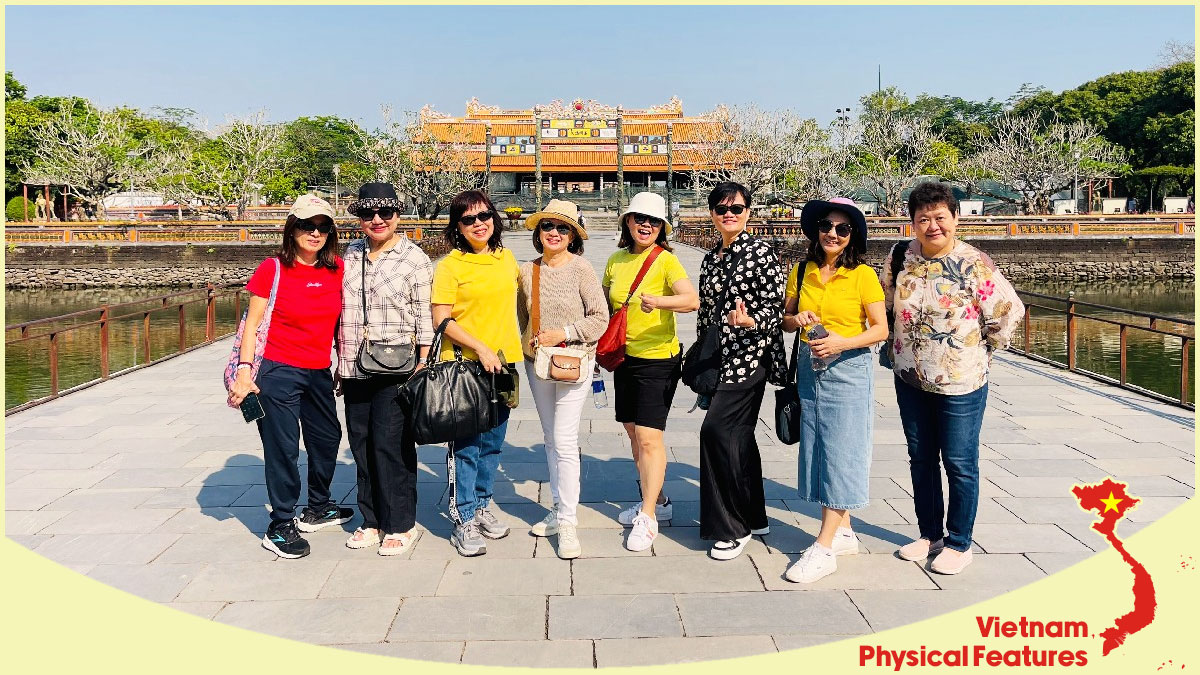
Vietnam Physical Features Central Vietnam
Central Vietnam is also home to some of the country’s most well-preserved historical sites, including the ancient town of Hoi An and the imperial city of Hue, both UNESCO World Heritage Sites.
Halong Bay: Vietnam’s Iconic Seascape
No trip to Vietnam would be complete without visiting Halong Bay, one of the most iconic natural wonders in the world. Located in the Gulf of Tonkin, Halong Bay is famous for its emerald waters and thousands of towering limestone islands topped with lush greenery.
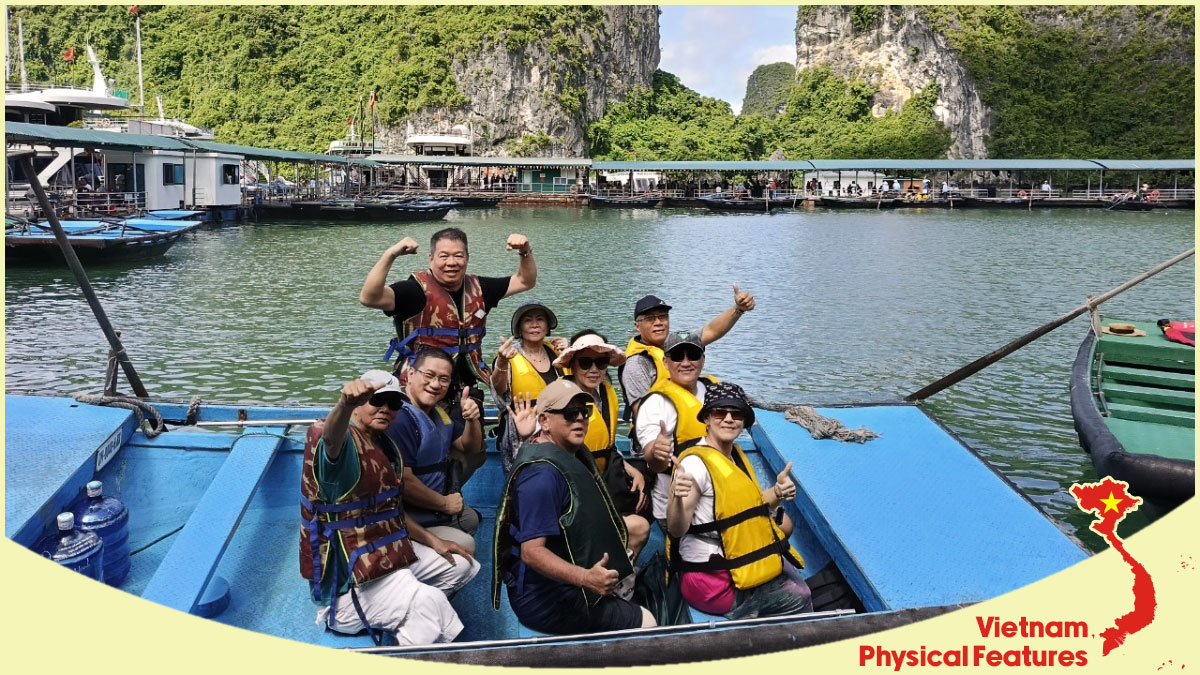
Vietnam Physical Features Halong Bay
A UNESCO World Heritage Site, Halong Bay offers stunning views, unique geological formations, and opportunities for exploration via boat tours or kayaking. The bay is also home to floating fishing villages, where travelers can experience local life on the water. The beauty and grandeur of Halong Bay are often compared to Ninh Binh, sometimes referred to as "Halong Bay on land" due to its similar karst formations.
The Limestone Landscapes of Ninh Binh
Ninh Binh, a relatively lesser-known gem, showcases a landscape of karst limestone mountains, winding rivers, and lush rice paddies. Known as "Halong Bay on land," this region of Vietnam physical features offers some of the most breathtaking scenery in all of Vietnam. Visitors can take a boat ride through Trang An or Tam Coc, where towering limestone cliffs rise from the river’s edge, creating a serene and unforgettable experience.
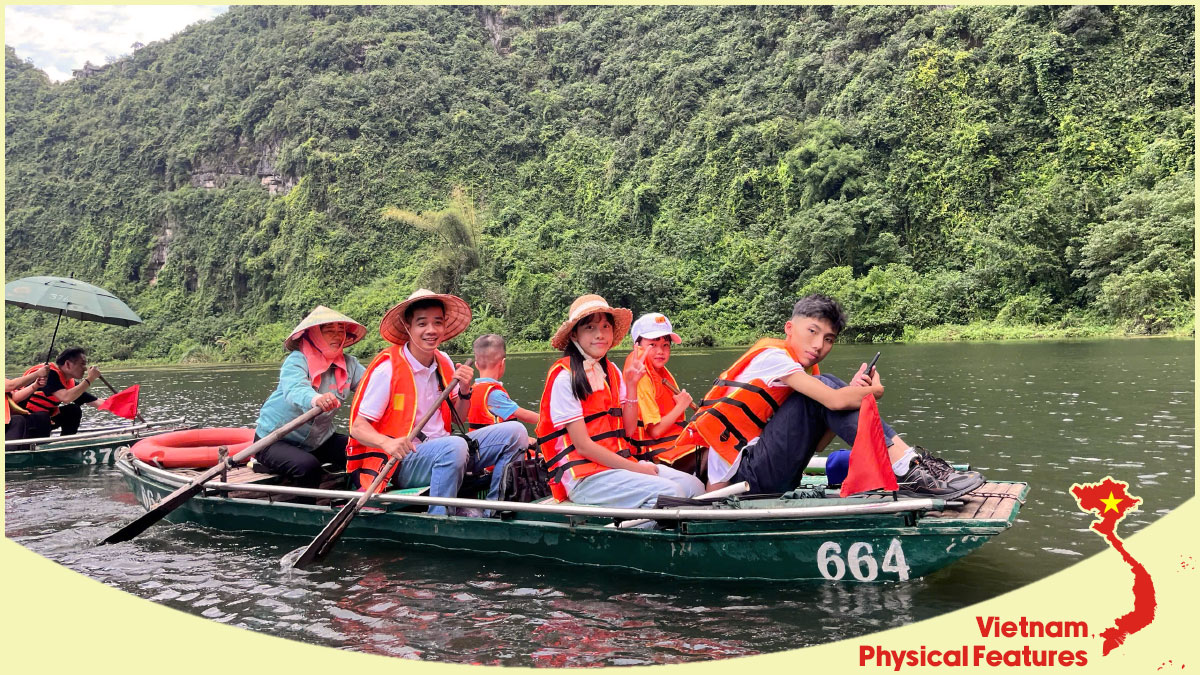
Vietnam Physical Features Ninh Binh
Beyond its natural beauty, Ninh Binh is also home to historical treasures such as the Bai Dinh Pagoda and the ancient capital of Hoa Lu, adding cultural depth to the area's stunning scenery. If you're keen to experience the best of northern Vietnam, you might want to check out a Hanoi Halong Ninh Binh 5 day tour with Asia Legend Travel. It's a great way to see these amazing places without the hassle of planning everything yourself.
Vietnam’s National Parks: Adventure in the Wilderness
Vietnam’s national parks are a haven for nature lovers and adventurers alike when it comes to exploring Vietnam physical features. From the dense jungles of Cuc Phuong National Park to the soaring mountains of Ba Be National Park, these protected areas offer incredible biodiversity and thrilling activities such as hiking, birdwatching, and caving.
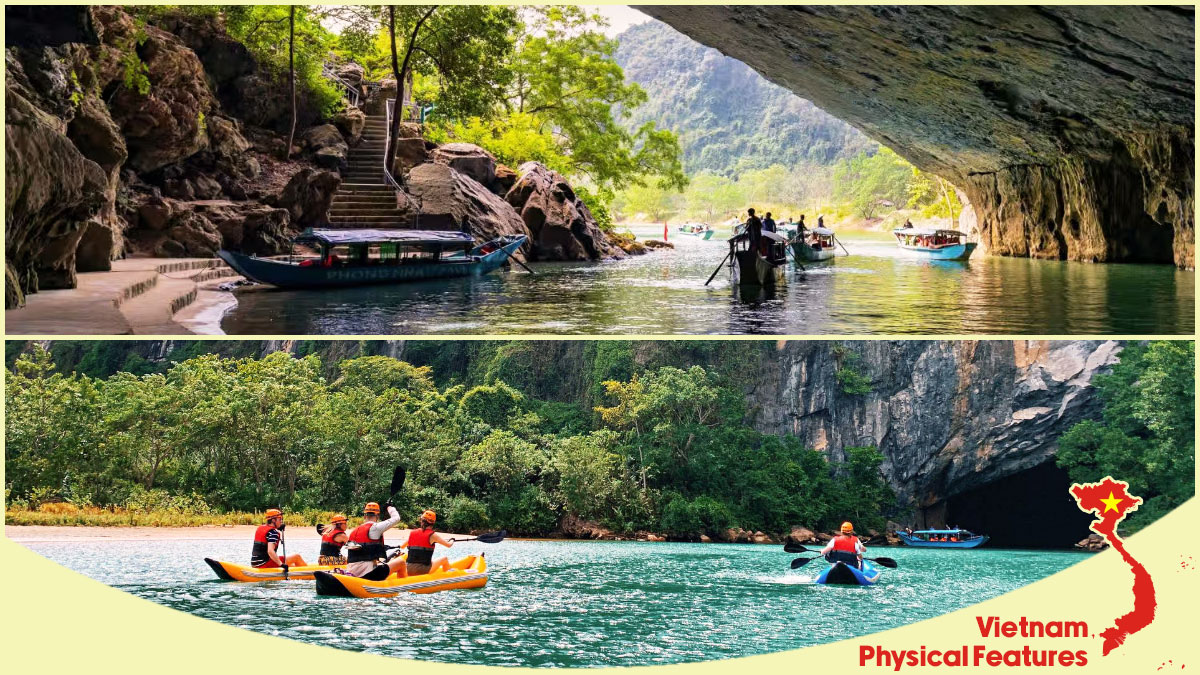
Vietnam Physical Features Phong Nha Ke Bang
One of the most remarkable parks is Phong Nha Ke Bang National Park, a UNESCO World Heritage Site known for its stunning karst landscapes and vast cave systems. Son Doong Cave, the largest cave in the world, is located here, drawing explorers from around the globe.
The Highlands and Plateaus of Central Vietnam
The central highlands, known as the Tay Nguyen region, offer a different perspective on Vietnam physical features. The highlands are characterized by rolling hills, coffee plantations, and waterfalls. Dalat, often referred to as the "City of Eternal Spring," is one of the most popular highland destinations, known for its cool climate, flower gardens, and French colonial architecture.

Vietnam Physical Features Da Lat
The highland region also plays a crucial role in Vietnam’s economy, particularly in agriculture, as it is a major producer of coffee, tea, and rubber.
Unique Geological Formations
Vietnam is also home to several unique geological formations that offer spectacular landscapes. The red and white sand dunes of Mui Ne, located along the southern coast, provide a desert-like environment that's perfect for sandboarding or simply admiring the beauty of the dunes at sunrise.

Vietnam Physical Features Mui Ne
Phong Nha Ke Bang National Park is another standout, known for its limestone karsts and cave systems. The park’s unique formations include massive stalactites and stalagmites, creating surreal underground landscapes that are unlike anything else in the world.
Vietnam physical features are incredibly diverse, offering a wealth of exciting experiences for visitors. Regarding the question of “where is Vietnam located,” its strategic position in Southeast Asia places it near several countries close to Vietnam, contributing to its vibrant and diverse culture. The country's landscape is shaped by major rivers, including the Red River, which originates in China and flows south into Vietnam. This geographic feature answers the question: "The Red River flows from China into which country?" For those looking to experience all that Vietnam has to offer, a Vietnam 14 day tour from North to South Vietnam provides an excellent opportunity to explore the country's varied landscapes and rich cultural heritage.
Vietnam’s Diverse Climate and How It Affects Travel
Vietnam physical features are closely tied to its diverse climate, which varies significantly from north to south. In the north, which lies Hanoi (Vietnam's capital), the climate is more temperate, with cold winters and hot summers. This region is best visited between November and April when the weather is cooler and dry.
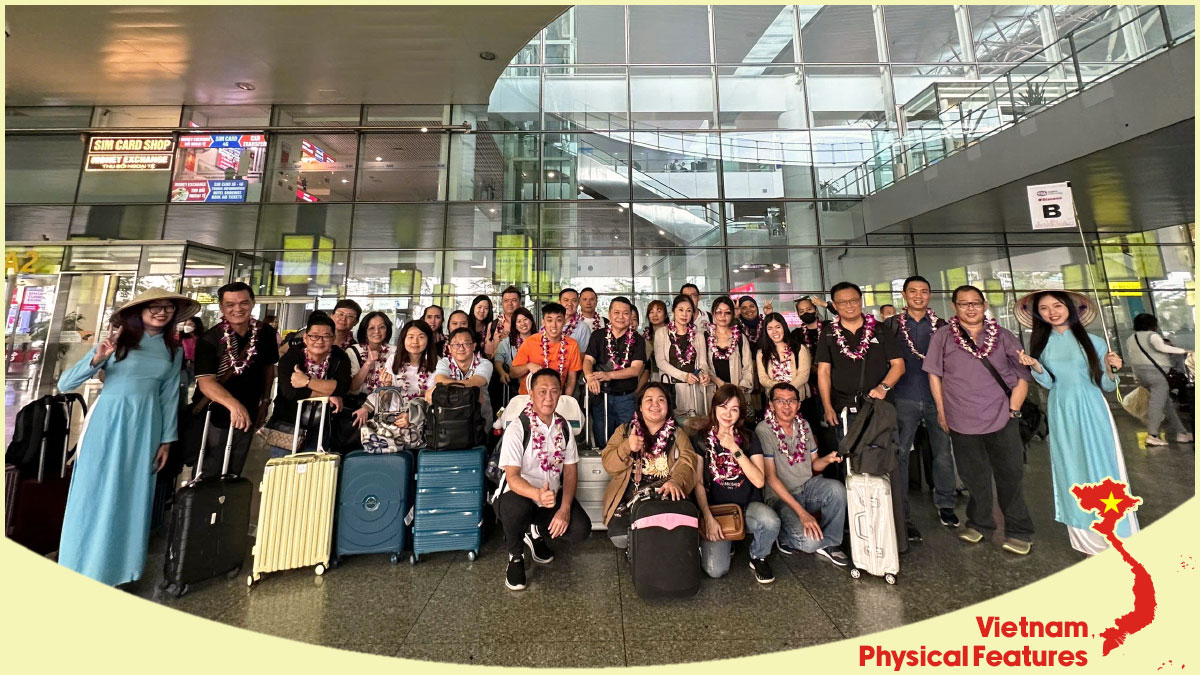
Vietnam Physical Features Vietnam's climate varies by region from north to south
Central Vietnam experiences a tropical climate with a distinct rainy season from September to December, so travelers should plan accordingly. The southern part of the country, including the Mekong Delta, enjoys a more consistent tropical climate year-round, with warm temperatures and a monsoon season from May to November. Understanding the Vietnam climate can help travelers make the most of their visit, whether they plan to explore the mountains, coastlines, or cultural sites.
Travel Tips for Exploring Vietnam Physical Features
Here are some essential tips for travelers exploring Vietnam physical features during their Vietnam tour:
- Vietnam Best time to visit: Depending on the region, the ideal time to visit varies. The dry season from November to April is generally the best time for most parts of the country.
- Packing essentials: Be sure to pack comfortable walking shoes, sunscreen, and appropriate clothing for different climates, especially if you're exploring both the north and south.
- Transportation: Vietnam has a reliable network of buses, trains, and domestic flights that make it easy to travel between regions and explore the diverse physical features of the country.
- Local guides: Hiring a local guide can enhance your experience, especially in national parks and rural areas where their knowledge of the terrain and culture is invaluable.
Vietnam physical features offer an unparalleled diversity that makes it a dream destination for nature lovers, adventurers, and culture seekers alike. From the towering mountains in the north to the lush Mekong Delta in the south, every region of Vietnam offers something unique. Whether you're trekking through the mountains of Sapa, cruising the waters of Halong Bay, or wandering the limestone landscapes of Ninh Binh, Vietnam's physical beauty will leave a lasting impression. With diverse Vietnam physical features and culture to match its stunning geography, Vietnam is a country that invites exploration and discovery at every turn.
